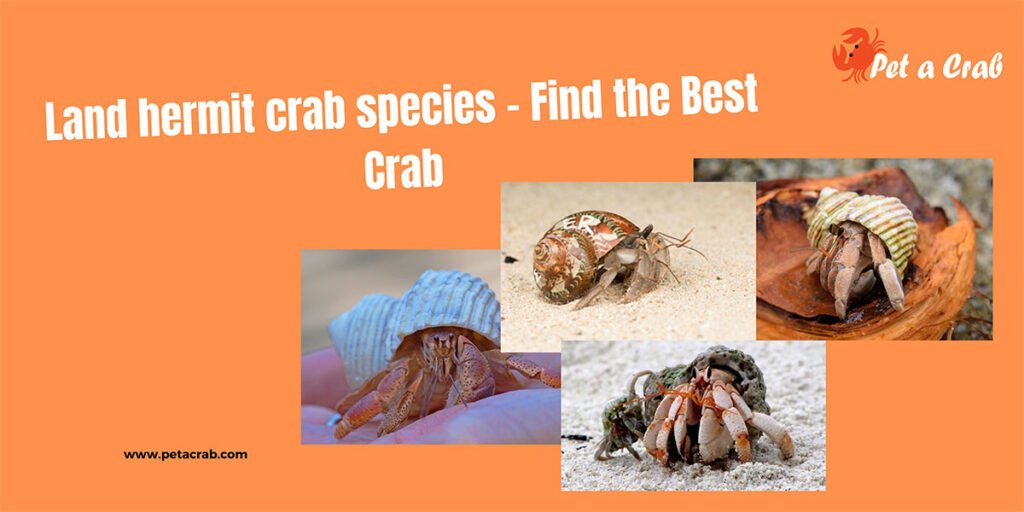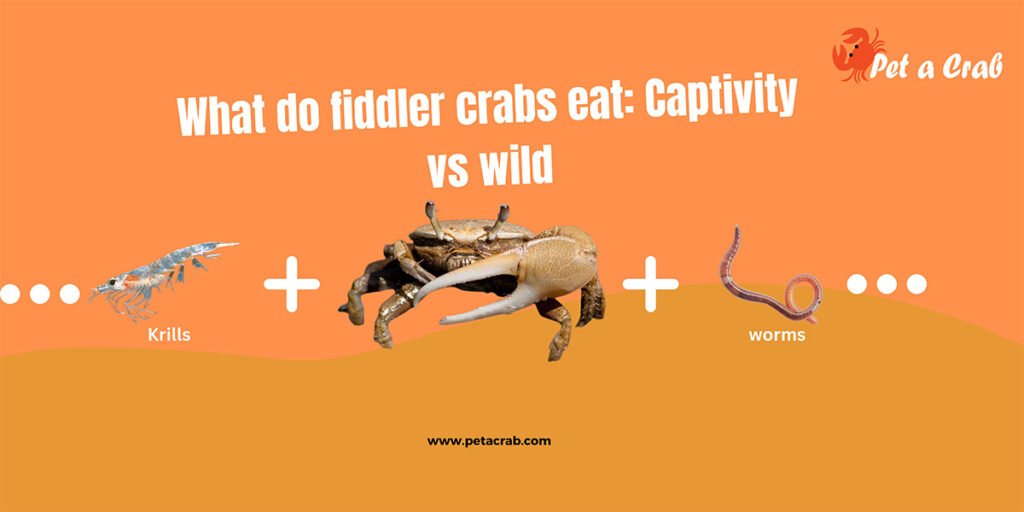The Caribbean hermit crab also known as purple pincher is a species of land hermit crab and a widely popular pet hermit crab species. Here we will discuss all of the information about Caribbean hermit crab and care according to their needs because different hermit crab species have different care requirements in many ways.
Giving the best care meaning mimicking their natural habitat will give them the best chance to live longer.

Caribbean hermit crab (Coenobita clypeatus)
| Scientific name and species | Coenobita clypeatus |
| Also known as | Purple pincher |
| Family | Coenobitidae |
| Genus | Coenobita |
| Lifespan | 30 to 40 years 10 to 12 years in captivity with good care |
| Habitat | Venezuela, Florida, The West Indian Islands, Bermuda, west Atlantic, and Belize |
| Color | Dark orange to light orange with purple claw |
| Size | 2 to 5 inches (5 to 12 cm) |
| Weight | 0.34 to 1 lb (100 to 500 grams) |
| Water | Saltwater and freshwater |
| Humidity | 70% to 80% |
| Temperature | 75°F to 85°F |
Caribbean hermit crab care
Tank setup
- Mates – As hermit crabs are social animals, Caribbean hermit crabs will need another Caribbean of the opposite gender. A pair together is the minimum number but the more of them you can keep in a tank the better active they will be. To know more…
- The tank – The Caribbean hermit crab aka purple pincher will need a lot of space to thrive. 20 gallons is the minimum tank requirement for 2 crabs. You will add 5 gallons for the one crab you add more after two meaning 3 crabs will need 25 and 4 crabs will need 30 gallons tank.
An overcrowded and smaller tank makes the crab stressed so be careful about tank choosing and bring a tank with a lid unless you want to see your crab exploring your house.
Substrate requirments
The crucial part is the substrate after the tank. If something goes wrong with the substrate the crabs have to suffer.
The substrate needs to be three times as deep as the largest crab in the enclosure. By measuring the height Caribbean hermit crabs will need 8 to 9 inches deep substrate.
You have to use substrates like beach sand, play sand, and eco earth. Half eco earth and half play sand or 5 parts of play sand and one part of coco fiber. The substrate needs to hold its shape as purple pincher loves to burrow under the substrate. Moist the substrate with dechlorinated saltwater.
Don’t use anything like gravel, wood shaving, calci sand, raw salt, and moss. Gravel can block the path of burrowing, wood shaving can get rotten, calci sand is good but it hardens over time which can injure a crab so it is no good, raw salt (not liquefied) can burn their gills, and it is easy for bacteria to grow on moss and as it doesn’t give a hard surface the hermit crab can fall.
- Hiding places – You can make hiding places with anything with your creativity. They need hiding places to rest, hide, and sleep. As the Caribbean hermit crabs are nocturnal they will spend much of their time hiding. To give them good hiding mediums you can use moss cave, cholla wood, catappa leaves, and half log pipe. A proper hiding place for each of the crabs.
- Climbing medium – Purple pinchers are good climbers and they love to climb when they are active at night. You can use a rope ladder, stone fountain, wooden ladder, and coco fiber carpet for climbing medium.
- Bowls – A total of three water bowls are needed in the tank one for food and the other two for fresh water and saltwater.
- There are some other things required in the tank that we’ll talk about below.

Shell requirements
Caribbean hermit crabs have specific shell requirements. Some hermit crabs prefer D shaped openings while Caribbean prefer turbos and round openings. They use the empty sea snail shells available near them. Generally, they use Turbo petholatus (tapestry turbo), Turbo fluctuosus (striped turbo, Mexican turbo), Cittarium pica (magpie, Indian top), Turbo argyrostomus, Turbo imperialis, Phyllonotus pomum (apple murex), and Liguus virgineus (Haitian tree snail, candy snail).
Give them a lot of shells with different choices, a minimum of 3 to 5 for each crab.
Temperature requirements
Caribbean hermit crabs prefer 75°F to 85°F with a drop of 70°F at night. Below this temperature level they will become lethargic with sickness.
Maintaining high temperature level is crucial for this hermit crab. You have to use a heating mat (also known as temperature controller for aquarium) at the side of the tank covering some of the substrate and don’t place the heating pad under tank. This will heat the substrate making it hard to live for the crab.
You can use a thermometer to monitor the temperature.

The best humidity
Caribbean crabs have high humidity requirement, from 70% to 80%, like their natural habitat sea shore has high humidity. This is also crucial for their health and breathing because land hermit crabs have modified gills which always need to keep moist.
Regularly mist the enclosure with a mister, 4 to 5 squirt should be enough for a day. If you live in a region with low humidity, consider using a hygrometer to monitor and keep the humidity 70% to 80%. Don’t keep the tank in air conditioned room as it will take the humidity away and make the enclosure cool which will be bad for a crab and don’t place a heating lamp as it zaps the humidity.
Diet and water for Caribbean hermit crabs
- Diet – As an omnivorous scavenger they will eat whatever they can get. In their natural habitat they eat decaying plant and animal matter as well as whatever fresh they find.
In captivity you don’t have to give decaying matters. Just give them fresh fruits (strawberries, blueberries, coconut, watermelon etc.), vegetable like spinach, carrot and kale, and shrimp, fish flakes etc. Give everything fresh and sliced by maintaining balanced diet. Commercial food is not recommended. In molting time give them food with calcium like cuttlebone and eggshell which will help them recover soon.
- Water – The Caribbean hermit crabs will need fresh water and saltwater in two bowl. The water must be dechlorinated and saltwater should be prepared with reef salt. Eating salt contains iodine which is bad for these crabs.


